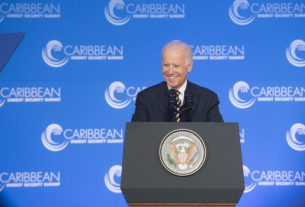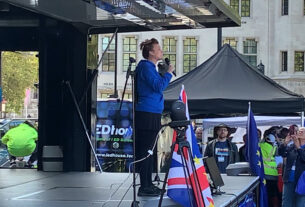Image by fernando zhiminaicela from Pixabay
The government and Sadiq Khan, the Mayor of London, have called for an inquiry into why coronavirus is causing so much death among people within the Black, Asian and minority ethnic communities. Recent figures have revealed that 35 per cent of Covid-19 patients in intensive care units are from a BAME background despite constituting only 14% of the general population.
While it remains to be seen if there is a specific pathological reason, in our hearts no one within the BAME community is surprised that this has happened. Failures to learn and enact recommendations from previous health inequality reports about poverty, poor housing and occupational inequalities made it all but inevitable.
What makes this an even more pressing problem is the median age of various ethnicities. The median age for white people is 41 years in the UK, while the median ages for Asians and Black people are 29 and 30 years respectively, according to the government’s own data published in 2018. Data that would make one assume ethnic minorities are underrepresented because the average age of patients in ICUs is 63 years.
Although the specific pathological reasons for these deaths have still to be established, there is, in fact, an abundance of existing research and empirical evidence already out there that accounts for the disproportionately higher rate of infections and fatality rate among the BAME community. Focusing on existing evidence may compel the government to take immediate action and save valuable lives.
Historical and recent government commissioned reports have, for instance, concluded that social determinants like poverty, long term unemployment and workplace inequality have a much bigger impact on the health of an individual than does the advancement of medicine and science in 21st Century Britain. In its recommendations, The Marmot Review in 2010 listed six recommendation to improve the health and well-being of communities. All of these objectives were based on social aspects such as ‘fair employment and good work for all’ and a ‘healthy standard of living for all’. Prior to that, The Black Report in 1980 drew similar conclusions by revealing that health is the outcome of economic conditions.
Recommendations from both reports are as relevant now as when they were published because a lower socioeconomic status still has a direct and negative impact on one’s health and well-being. Doing minimum-wage jobs, being out of employment for long durations, residing in poor and inadequate housing contribute to an increased likelihood of suffering from diseases and lower healthy life expectancy.
‘People in more deprived populations often have higher rates of disease…and more than one disease’, according to a report by The King’s Fund. The effect coronavirus has on people already suffering from pre-existing diseases can’t be overstated because they are the most at-risk group.
Also read:
- Here is the amazing Muslim organisation donating meals to Doctors and Nurses in London
- Teenagers in Pakistan help those worst affected by the Coronavirus lockdown
- Selena Gomez donates to a Los Angeles Hospital so they can buy ‘Masks and Ventilators’
BAME communities are overrepresented in the lower socioeconomic stratum. Ethnic minorities represent a staggering 29 per cent of the people in the lowest social class which includes those who have ‘never worked’ or have been long term unemployed. At the higher end, they only constitute a dismal 12 per cent of people in the top socioeconomic group. Thus, certain BAME communities like South Asians have higher chances of developing heart disease and diabetes at a relatively younger age than other ethnicities.
Those in long term employment are not better off either during this pandemic because of the requirements of their jobs. All of the jobs that ethnic minorities are more likely to do have one thing in common: most of their jobs can’t be done from home which means that they are unable to practice social distancing. They are doing the sort of jobs that are essential to keep the country running during these dark times, their jobs are the lifeline of this country. This is in direct contrast to many of the jobs that White people do in Britain which are described as ‘Professional’.
For example, 44 per cent of NHS doctors and 24 per cent nurses are non-White. Employees for both professions are in the frontline in the war again the coronavirus pandemic. It therefore isn’t at all surprising that the first 10 doctors who died from the coronavirus were from BAME backgrounds. These deaths are not inevitable. Given the grave lack of ‘Personal Protective Equipment’ (PPE) many ethnic minority lives are being lost that could have been entirely preventable.
Similar patterns are also replicated in other sectors coupled with persistent inequality such as ethnicity pay gaps. For example, 30.5 per cent of TFL’s workforce is from a BAME background and yet they are underrepresented in managerial positions. This includes bus drivers and train operators who don’t have the luxury to stay home and are thus more likely to catch the coronavirus. On top of that they have to deal with ethnicity pay gaps which means that their White counterparts are paid more than them for doing the same kind job.
These patterns of serious and persistent occupational inequalities are directly imported into close knitted communities and homes, quite often with life-threatening consequences as this pandemic has already illustrated.
In line with being more likely to suffer from poverty and be in low paid jobs, BAME communities are also more likely to live in overcrowded conditions – something that Sadiq Khan and Sajid Javid, the former Chancellor, can attest to from their childhood years. But this is additionally highlighted by the fact that 30 per cent of Bangladeshi households and 16 per cent of Pakistani households live in overcrowded conditions. In the worst case scenario, these overcrowded conditions make it practically impossible for a family member with mild symptoms to actually self-isolate.
The effects of occupational inequalities and overcrowded housing are further multiplied because of a family minded lifestyle. Much of the government advice has been oblivious to the fact that BAME communities tend to live together with members of different generations either in the same household or in the same neighbourhood. For instance, 80 per cent of South Asian families live with young people in the same household and Black people are also more likely to have more than one generation living under the same roof. This means that the government guideline urging the public not to visit their parents on Mother’s Day last month wasn’t practicable by a great majority of the South Asian community.
In other words, this means that older people in the BAME community are unable to self-isolate as much as their white counterparts who are more likely to live either on their own or with someone from own generation.
Even if one person catches the coronavirus in these overcrowded households then it’s very likely for them to pass it on to their family, especially to the older generation who are at extreme risk. Official government advice dictates that even if one family member is displaying symptoms of coronavirus then they should be using their own toilet and bathroom, according to Public Health England’s advice. Practicing this advice is not even remotely possible for people living in overcrowded conditions.
The families who have lost loved ones to this invisible illness would prefer an immediate approach to tackle the high infection rate among the BAME community because it could save other families from experiencing similar tragedies. Given the structural nature of these problems, government initiatives are necessary to reduce poverty, poor housing and occupational inequalities.
We owe it not just to the BAME communities, but also to ourselves, to learn and more importantly act on previous government commissioned health inequality reports about poverty and occupational inequalities because no one is safe from this virus until everyone is safe.
*Support NewsLeaf.com from as little as £1 via PayPal by clicking here.
_____________________________________________________________________________

Muhammed Raza Hussain is an award-winning writer: the Extra-Mile winner of the News Quest Young Reporter Scheme 2014 and the recipient of the ‘Talent for Writing’ certificate by Young Writers. He was also awarded the ‘Prize for Outstanding achievement is Sociology‘. Twitter: @M_RAZA5 | Instagram: @M.Raza.H_




